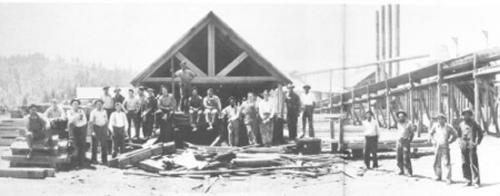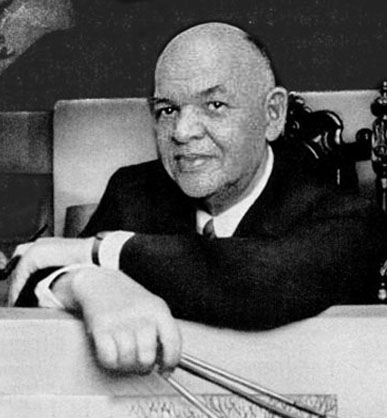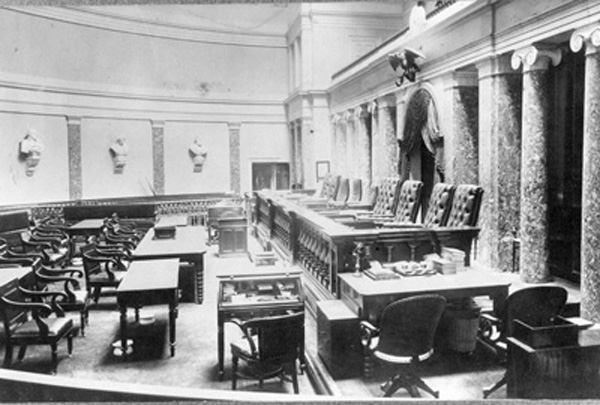Economic opportunity motivated millions of early 20th Century African Americans to leave the segregated South. Most of the people of the Great Migration found better jobs and better pay in northern factories in World War I and western defense industries in World War II. However, at least a few thousand migrants pursed improved employment opportunities in tiny western lumber mill towns. Not all of the black migrants had been sharecroppers – tens of thousands had industrial experience in southern pine mills. This experience provided another option for African Americans when combined with another economic reality, the demise of southern forests and the opening of high quality and vast quantities of western lumber.
By the 1920s the southern lumber industry neared the end result of decades of “cut-out and get-out” logging philosophy. At the same time improved transportation and mechanization provided western forest products to eastern markets. A number of southern lumber companies recognized this reality and invested in western mills. Powell Lumber Company of Lake Charles, Louisiana was one such company.
In late 1926 Powell Lumber purchased two existing mills in northern California, about fifteen miles apart. Those mills became the Quincy Lumber Company. One of the mills, located in Sloat, California, about 75 miles west of Reno, Nevada, was truly a company town–the purchase included a saw mill, box factory, company store, and segregated company housing. The other mill formed the imposing eastern boundary of Quincy, about 15 miles west of Sloat, then a town of less than 1,000. Though not a company town in that all of the facilities were owned by Powell Lumber, the mill complex did include housing that came to be known as “the Quarters,” home to the firm’s black employees.
Unfortunately, this investment was poorly timed. The Quincy mill sat silent during most of the 1930s and only the Sloat box factory operated during the same period. However, by 1937 lumber industry fortunes in Northern California dramatically reversed and so did the need for labor.
During its run Quincy Lumber employed hundreds of men, mostly white and black migrants from Louisiana and Arkansas, made their way to this fairly remote area of Northern California. Whatever initial recruiting the company did was quickly replaced by family networks. When winter closed the forests men returned to the South where they spread the news of good paying jobs. In spring more men and families joined the growing communities.
A 1929 map of the Quincy complex shows approximately six buildings as “colored employee dwellings.” The 1938 update of the same map shows an expansion to nearly forty buildings. A 1939 map of Sloat labeled “Shacks Occupied by Colored People” includes about forty-five buildings. At its height in 1940, the 400 African Americans in Quincy comprised 40% of the town’s population. Another 350 in neighboring Sloat comprised about 20% of that community’s residents.
By all accounts Quincy Lumber gave equal pay to its white and black employees and many African American men worked in skilled positions nearly impossible to gain the southern mills. This was in contrast to Southern mills where black workers received on average about 50% of the pay of white employees for comparable jobs. Union membership in the West by both white and black workers may have accounted for the pay equality.
The black workers of Quincy and Sloat brought their families and soon established community institutions such as churches and fraternal orders. Starlight Missionary Baptist Church was founded in Quincy. The men there also created a Masonic chapter and the women had the Order of the Eastern Star.
Though segregated housing was the norm, little else was divided by race. After two years of resistance from white locals, African American children began attending local schools in 1940. Their presence generated for the time and place scenes of remarkable integration. In fact by the Spring of 1954, a black senior, John Clark, was elected student body president at Quincy High School. White adults entertained at “the Sump,” a black club in the Quincy Hotel. Local African Americans often spent their leisure hours in the Quarters at B&B’s Club owned by Ben and Alberta Conston. Alberta remembered Ben starting the barbecue each morning before heading to his mill job. An African American couple in Sloat created the Waymon Sales Restaurant which generated a reputation for great food and service long after it closed. In 1947 the colored Red Sox baseball team integrated the local baseball league at the same time Jackie Robinson broke into major league baseball. A white Louisiana native remarked on the degree of integration in Quincy and Sloat saying openly what many blacks and white residents already knew, that such intermingling would not have been possible in Lake Charles, Louisiana.
While the introduction of hundreds of African Americans into Sloat and Quincy was not without problems, the white and black citizens achieved degrees of integration rarely seen in other parts of the United States at that time. Economic benefits bound black and white workers to the Quincy Lumber Company and the company with the community. Many elderly black and white people speak with great admiration of the Quincy Lumber Company, both groups proudly calling Quincy and Sloat home.



















